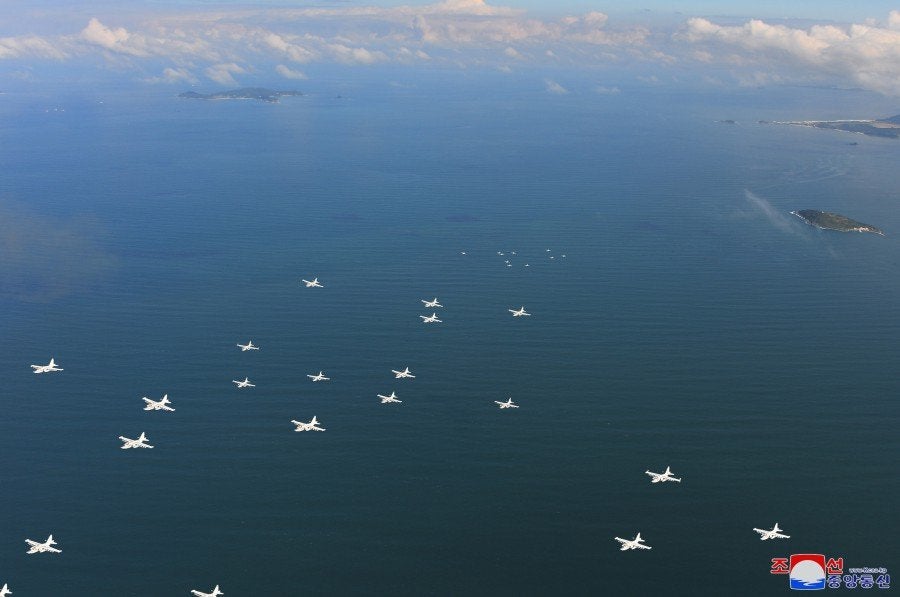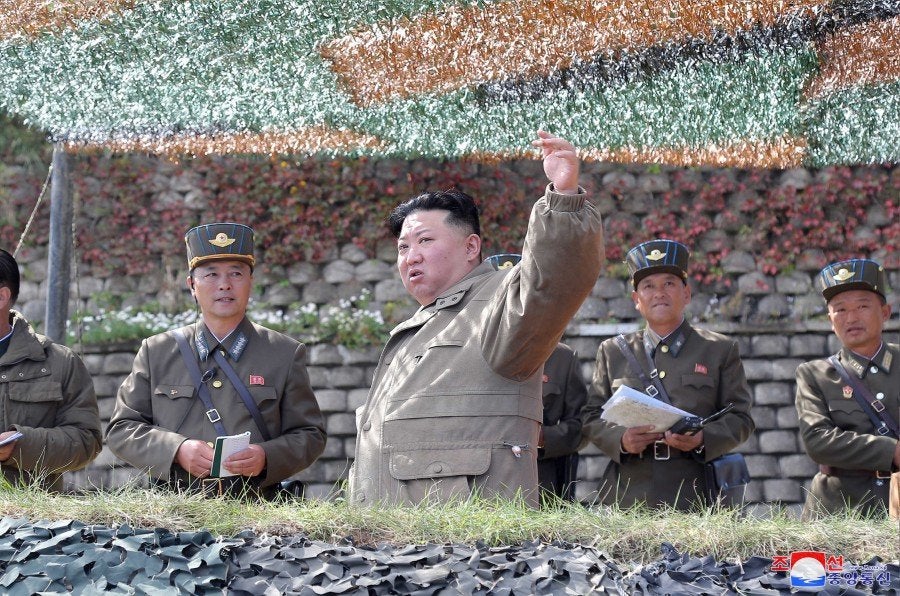North Korean Leader Oversees Military Exercises in Response to US and ROK
On 6 October, 2022 the Korean People’s Army Air and Anti-Air Force conducted a large-scale aerial exercise filling the sky with their aircraft while under the watchful gaze of North Korea’s supreme leader Kim Jong-Un. The exercise took place alongside other provocations that the North Koreans have undertaken in the region such as launching multiple missiles including one that was launched over the Japanese Island of Hokkaido.
North Korea’s state media reported that Kim Jong-Un oversaw the launches and exercises which were described as a response to military exercises conducted by the US and South Korean armed forces. As they both conducted joint exercises in the region as a response to the recent missile test that was conducted by the North Koreans, which was itself said to be in response to the US Vice President’s visit to the region. The recent exercise preceded by another smaller training flight that was conducted by the KPAAF’s formation flight and air-to-ground live fire training consisted of 12 military aircraft, including eight fighters and four bombers.

The aerial military exercise was conducted under the supervision of the high ranking military officials and Kim Jong-Un himself. The spokesman for DPRK Ministry of National Defense singled out the deployment of the US Navy carrier Ronald Reagan to the region. The KPAAF conducted the exercise with an estimated 150 aircraft, most of which are outdated compared to those of the South Korean, Japanese and United States Air Forces on the other side of the DMZ. The types of airframes that the KPAAF deployed include some of those currently deployed in the Russo-Ukrainian War, including the Su-25 and MiG-29, as well as the obsolescent MiG-21, which is still operated by North Korea in abundance. South Korea’s defense ministry estimates that the full KPAAF numbers up to 810 aircraft.
The objective of the air exercises according to North Korean state media was to conduct air readiness measures for both air to air and air to ground attacks on an island off the coast. They also stated that “the flying corps discharged the missions of striking an islet, which was supposed to be the enemy’s military base, with air-to-surface medium-range guided bombs and cruise missiles, and the missions of close raids and bombing flights.” While the North Koreans have demonstrated that they can get these airframes in the air to conduct large parade strikes to showcase to the North Korean public and as possible warning to the regimes in the region. Their operational deployment would likely involve throwing a considerable number of the aircraft into a, likely, one way trip to attack allied air bases and air defenses combined with infiltration attacks. With the South Korean and US air defenses in the region these tactics would lead to the widespread destruction of North Korea’s air assets, in turn leaving North Korean ground forces vulnerable.

To describe the North Korean military as ‘not up to date’ is something of an understatement, the vast majority of their aircraft being at this point is at least 40 years old and the KPAAF abilities to modernize these airframes is dubious to say the least. Modernization of some of KPAAF’s airframes is certainly possible, similar to Romania’s fleet of MiG-21s. Due to the fact that the North Koreans ability to import new military technology is extremely limited they are forced to rely on stop gap measures. Analysts believe that North Korea’s air force has been the branch which has suffered the most difficulty in trying to modernize and remain relevant. Especially since the South Koreans have advanced and modern airframes such as the F-35A, significantly outclassing anything that the North Koreans can currently field. The aforementioned MiG-29S-13s which during the early 90s were the most advanced variant of that aircraft which were not provided to the more trusted Warsaw Pact nations. However, they only operate only 18 of these aircraft. Beyond the MiG-29, the KPAAF operates MiG-23s and MiG-21 obtained after the end of the Cold War, these remain the mainstay of their aging fleet.

The Korean peninsula seems locked in a cycle of each nation’s militaries reacting to the others exercises and demonstrations of military strength. The latest example of which being North Korea’s launch of more missiles into the sea early on the morning of the 14 October. The North Korean military issued a statement that the new round of test firings is a demonstration that North Korea is able to deter any force that threatens their country, including the use of tactical nuclear weapons.
A chief fear arising from the increased activities on both sides of the border is the threat of a miscalculation on either side of the border which could lead to disastrous consequences for the region. Unfortunately it seems that Kim Jong Un is as big a fan of provoking international incidents as he is of American basketball and the end of escalation in the region is largely a ball which remains in his court. In the meantime the United States sees the only way to protect South Korea is to maintain a strong deterrence and good relationships with allies in the region.

